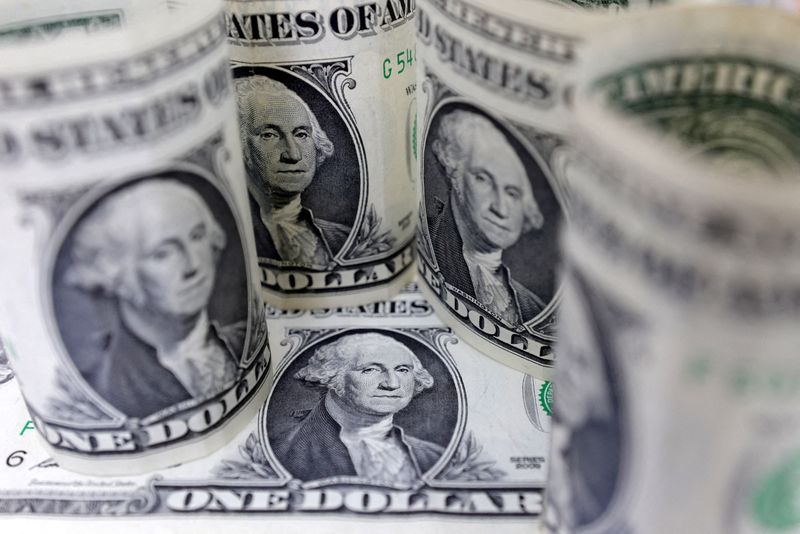By Hannah Lang
NEW YORK (Reuters) -The U.S. dollar was down on Tuesday after earlier hitting its highest in almost five months, following a new report that showed U.S. job openings held steady at higher levels in February.
The Japanese yen was last up at 151.605 per dollar, after earlier dipping to 151.79. It has traded in a tight range since reaching a 34-year trough of 151.975 on Wednesday, which spurred Japan to step up warnings of intervention.
The dollar index rose to 105.1 on Tuesday, its highest level since Nov. 14, adding to sharp gains on Monday after U.S. data unexpectedly showed the first expansion in manufacturing since September 2022, causing traders to pare rate bets.
The dollar index last stood at 104.81, down 0.181% after a report from the Labor Department showed that job openings edged up to 8.756 million on the last day of February, slightly higher than expectations, as traders also digested a February increase in factor orders.
The Commerce Department's Census Bureau on Tuesday said new orders for U.S.-manufactured goods rebounded more than expected in February, boosted by demand for machinery and commercial aircraft as manufacturing regains its footing.
Monday's U.S. ISM manufacturing survey data featured a sharp rise in a measure of prices in the sector, adding to investors' concerns that inflation will be slow to fall back to 2%, delaying the Federal Reserve's first rate cut.
"Really the dollar over the last nine months or so has been driven by Fed policy expectations -- when the probability of a cut increases sooner, the dollar tends to weaken, and vice versa," said John Velis, Americas macro strategist at BNY Mellon.
Fed Chair Jerome Powell on Friday said the central bank was in no hurry to lower borrowing costs after data showed a key measure of inflation rose slightly in February.
On Tuesday, Japanese Finance Minister Shunichi Suzuki reiterated that he would not rule out any options to respond to disorderly currency moves.
Japanese authorities intervened in 2022 when the yen slid toward a 32-year low of 152 to the dollar.
The yen's decline has come despite the Bank of Japan's first interest rate hike since 2007 last month, with officials cautious about further tightening amid a fragile exit from decades of deflation.
"The fact that they didn't [intervene] last week to me suggests that it's going to take a break above 152 for Japanese policymakers to start getting involved, and in retrospect, I think maybe that's prudent of them because intervention loses its significance each time you enter the market," said Matt Weller, head of market research at StoneX.
Still, officials are "wary of backing themselves into a corner by drawing a line in the sand at 152," said Nicholas Chia, Asia macro strategist at Standard Chartered (LON:STAN).
"The rationale of jawboning and intervening in FX markets is mainly to buy time for the JPY in the hopes that USD strength wanes and recedes," he said.
Elsewhere, China's yuan fell to a 4-1/2-month low as a strong dollar offset selling of the U.S. currency by state-owned banks. The yuan fell to a low of 7.2364 per dollar on the day, its weakest level since mid-November.
The euro fell to its lowest since mid-February at the end of the Asian session but was last up at $1.0763. Data on Tuesday showed that the euro zone factory downturn deepened again in March.
Sterling ticked up from near its lowest since December to $1.2569 after data showed its manufacturing sector brightened last month.

Bitcoin declined 5.36% to $66,027 after earlier declining to as low as $64,550.
The Swiss franc hit its lowest since the start of November at 0.909 to the dollar. It has dropped around 2.5% since the Swiss National Bank unexpectedly cut interest rates on March 21.